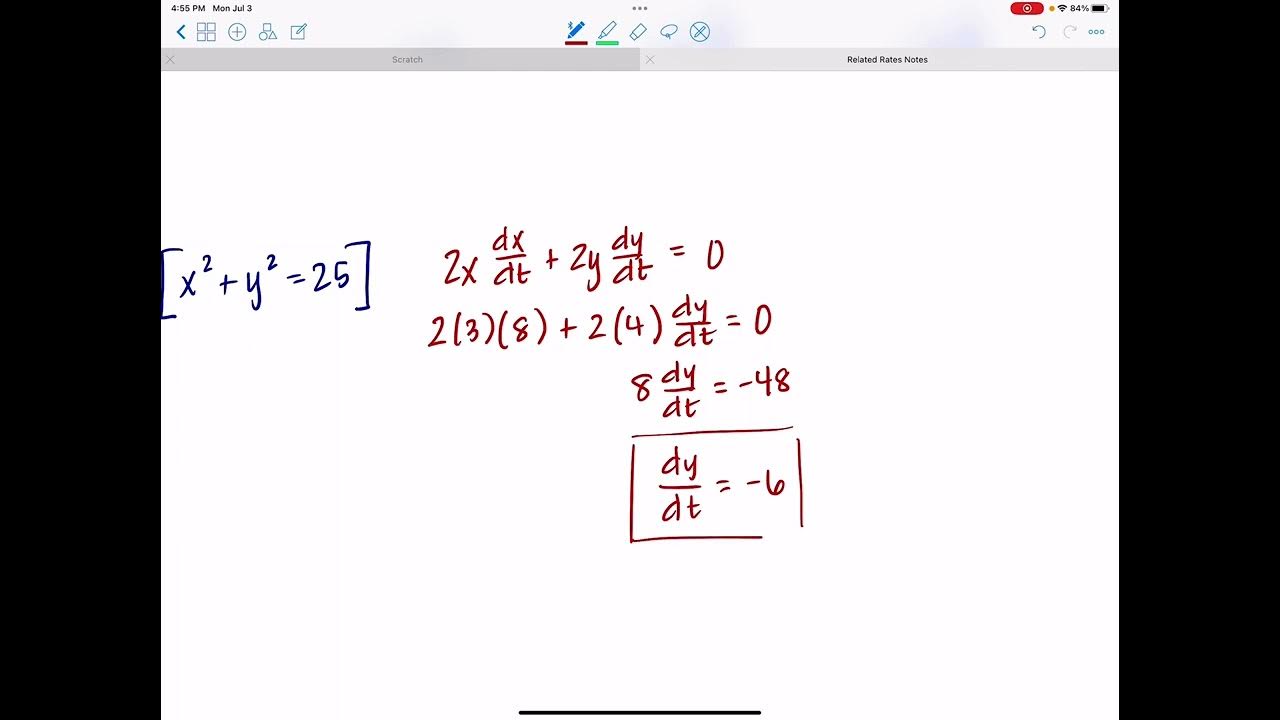Analyzing problems involving definite integrals | AP Calculus AB | Khan Academy
TLDRThis educational video delves into the mathematical process of determining population growth and water depth changes over time, utilizing calculus concepts. It begins with an example of calculating the population of a town that grows exponentially, emphasizing the importance of integrating the rate function over a specific time interval to find the change in population. The instructor then transitions to analyzing water depth in a tank, focusing on the change during a particular minute. Through these examples, viewers learn to set up integral expressions for real-world problems, enhancing their understanding of calculus applications in environmental and urban planning scenarios.
Takeaways
- 👨🎓 The rate of population growth in a town is described by the function r(t) = 300e^(0.3t), where t is time in years.
- ⏰ At t = 2 years, the population of the town is 1,200 people.
- 📈 To calculate the change in population over a period, integrate the rate function over that period.
- ✅ The integral of the rate function from t = 2 to t = 7 years will yield the population change during that time.
- 👍 The town's population at t = 7 is calculated by adding the population at t = 2 to the change in population from t = 2 to t = 7.
- 📊 The correct expression to find the town's population at t = 7 involves the initial population plus the integral of the rate of change.
- ⚠️ Other choices provided might include just the change in population, the population increase from the beginning, or the derivative of the rate function, which are not correct for determining the actual population at t = 7.
- 📉 The depth of water in a tank changing at a rate of 0.3t cm/min introduces a concept similar to the population problem but applied to a different context.
- 🚕 Calculating the change in water's depth during a specific minute (the fourth minute) also uses integration, with bounds set to the minute's start and end.
- 💡 Understanding the bounds for integration is crucial for correctly calculating changes over specific intervals, as demonstrated with the fourth minute's water depth change.
Q & A
What is the given rate function for the town's population growth?
-The given rate function for the town's population growth is r(t) = 300 * e^(0.3t), where 't' represents the time in years.
What was the population of the town at t = 2 years?
-At t = 2 years, the town's population was 1,200 people.
How can we find the change in population from t=2 to t=7 using calculus?
-To find the change in population from t=2 to t=7, we can take the integral of the rate function r(t) = 300 * e^(0.3t) from t=2 to t=7.
What is the expression to calculate the town's population at t=7?
-The expression to calculate the town's population at t=7 is the initial population at t=2 (1,200 people) plus the change in population from t=2 to t=7, which is the integral of the rate function from t=2 to t=7.
What is the purpose of taking the integral of the rate function in this context?
-The purpose of taking the integral of the rate function is to determine the change in population over a given time period, in this case, from t=2 to t=7 years.
How does the rate function relate to the actual population at a given time?
-The rate function represents the rate of population growth at any given time. To find the actual population at a specific time, you need to account for the initial population and the change in population over time, which is calculated by integrating the rate function.
What is the depth of water in a tank at t=0?
-At t=0, the depth of water in the tank is 35 centimeters.
What is the rate of change of the water's depth in the tank?
-The rate of change of the water's depth in the tank is given by r(t) = 0.3t centimeters per minute, where 't' is the time in minutes.
What expression should be used to find the change in the water's depth during the fourth minute?
-To find the change in the water's depth during the fourth minute, we should take the integral of the rate function r(t) = 0.3t from t=3 to t=4.
Why is the fourth minute specifically defined as t=3 to t=4?
-The fourth minute is defined as t=3 to t=4 because it represents the time period starting from the end of the third minute to the end of the fourth minute, which is the interval we are interested in for calculating the change in water depth.
How can we determine the bounds for the integral when calculating the change in the water's depth during the fourth minute?
-The bounds for the integral are determined by the start and end of the fourth minute, which are t=3 (the beginning of the fourth minute) and t=4 (the end of the fourth minute).
What would be the result if we took the integral of the rate function from t=0 to t=7 for the town's population?
-Taking the integral of the rate function from t=0 to t=7 would give us the total change in population from the start (time zero) to t=7, assuming the population was zero at time zero. However, since we know the population at t=2, we cannot assume it was zero at t=0.
Outlines
📈 Population Growth Calculation
This paragraph discusses the calculation of a town's population growth over time. The instructor introduces a mathematical model where the population, denoted as 'r of t', grows at a rate proportional to 'e' to the power of '0.3t', with 't' representing the time in years. The town's population at 't equals two' is given as 1,200 people, and the task is to find the population at 't equals seven'. The instructor emphasizes that the goal is to set up the expression using calculus, rather than solving the problem. The integral of the rate function from 't equals two' to 't equals seven' is used to find the change in population during this period. The final population at 't equals seven' is calculated by adding the initial population at 't equals two' to the change in population over the five-year period.
💧 Water Depth Change Analysis
The second paragraph focuses on calculating the change in water depth in a tank over a specific time interval. The rate of change of water depth, 'r of t', is described as 0.3t centimeters per minute, where 't' is the time in minutes. The initial water depth at 't equals zero' is 35 centimeters. The objective is to determine the change in water depth during the fourth minute. The instructor explains that the solution involves taking the integral of the rate function over the time interval from the start of the fourth minute to the end of it, which is from minute three to minute four. The correct expression is identified as the first choice, and other options are discussed to clarify why they are not suitable for the problem at hand.
Mindmap
Keywords
💡population growth
💡rate function
💡integral
💡change in population
💡calculus
💡time
💡e to the power of
💡derivative
💡water depth
💡tank
💡minute
Highlights
The town's population grows at a rate described by a mathematical function, r of t equals 300 times e to the power of 0.3t.
At time t equals two, the town's population is specifically 1,200 people.
To find the town's population at t equals seven, one must integrate the rate function from t equals two to t equals seven.
The integral of the rate function represents the change in population over time.
The population at t equals seven is the sum of the initial population at t equals two and the change in population from two to seven.
The problem does not ask for the change in population but rather the actual population at a specific time.
The depth of water in a tank changes at a rate described by r of t equals 0.3t centimeters per minute.
The initial depth of the water at time t equals zero is 35 centimeters.
The objective is to find the change in water depth during the fourth minute.
The integral of the rate function over the appropriate time bounds will yield the desired change in water depth.
The fourth minute is specifically the time interval from t equals three to t equals four.
The correct expression to calculate the change in water depth during the fourth minute is given by the first choice in the problem.
The expression that calculates the change over the first four minutes is not the correct choice for the fourth minute alone.
An expression that calculates the change from three to three would yield zero, as there is no actual change in that instant.
Understanding the rate function and its integral is crucial for solving problems involving population growth or changing depths.
Calculus concepts, such as integration, are applied to real-world scenarios like predicting population changes and water levels in tanks.
The problem-solving approach requires identifying the correct time bounds for the integral to find the precise change in the variable of interest.
Transcripts
Browse More Related Video
5.0 / 5 (0 votes)
Thanks for rating:





